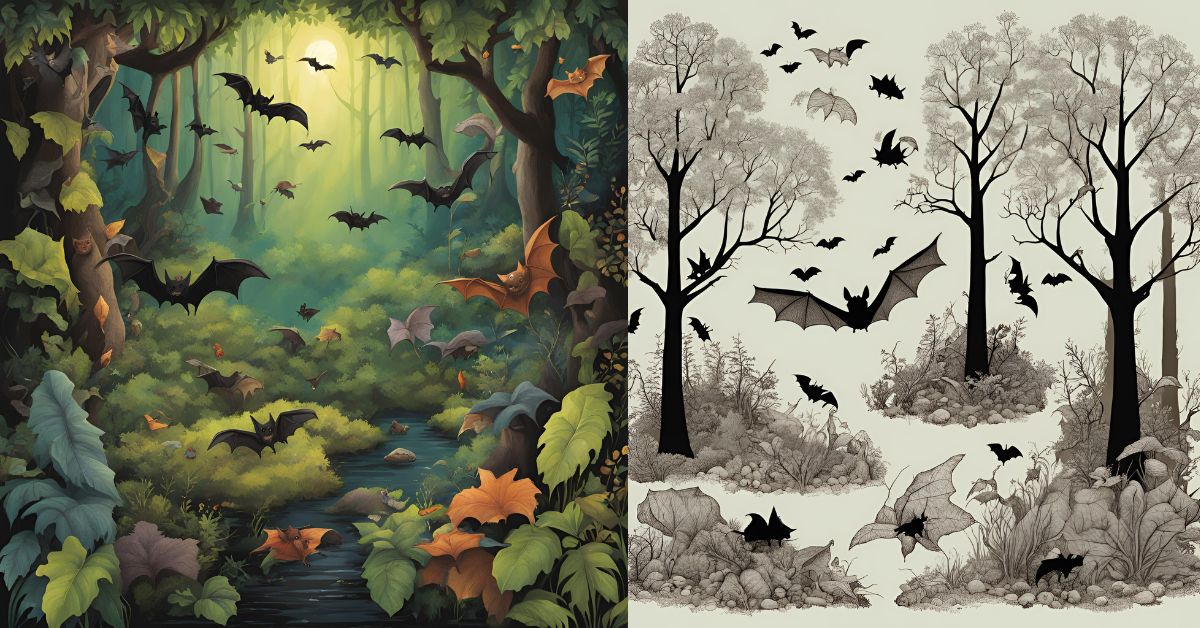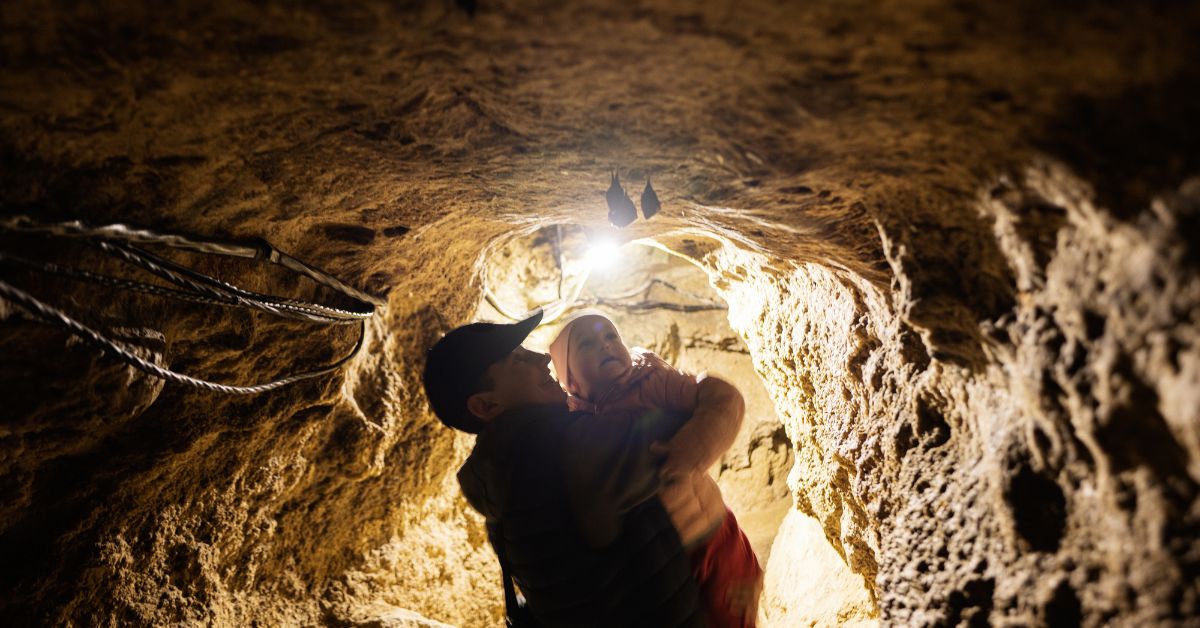When investigating the world of warm blooded animals, bats regularly capture our creative energy with their nighttime propensities and interesting adjustments. Among them, Little Bats, too known as microbats or vesper bats, stand out for their little estimate and extraordinary differences. This article gives a comprehensive see at these intriguing animals, advertising bits of knowledge into their science, behavior, and environmental importance.
What Are Little Bats?

Little bats are portion of the family Vespertilionidae, which envelops over 300 species universally. These bats are for the most part little, with wingspans extending from 5 to 15 inches. They are found on each landmass but Antarctica. Their little measure, coupled with a profoundly adjusted echolocation framework, permits them to flourish in different situations, from thick timberlands to urban areas.
Physical Characteristics
Little bats display a extend of physical characteristics custom fitted to their ways of life. Most species have stretched wings that are perfect for dexterous flight. Their little measure helps in maneuverability, permitting them to explore through tight spaces and capture little creepy crawlies mid-flight. The hide of small bats can change in color from light brown to dull gray, giving camouflage in their characteristic habitats.
Echolocation Abilities
One of the most exceptional highlights of little bats is their echolocation capacity. By emanating high-frequency sound waves, these bats can identify objects and prey in total obscurity. This natural sonar framework is exceedingly successful, permitting small bats to chase creepy crawlies with exactness. The echolocation calls are radiated through the mouth or nose and are reflected back by objects, giving bats a nitty gritty “outline” of their surroundings.
Habitat and Distribution

Little bats possess a wide run of situations. They can be found in tropical rainforests, mild forests, and indeed dry deserts. Each species has adjusted to its particular environment, whether it’s the thick foliage of a tropical woodland or the cool, dry conditions of a cave.
Forest and Forest Habitats
In forested and lush ranges, little bats perch in tree hollows, beneath takes off, or inside the bark of trees. These environments give shield and security from predators. The thick foliage moreover makes a difference conceal their perching locales from potential threats.
Urban Environments
Interestingly, numerous little bats have adjusted to urban situations. Buildings, bridges, and other structures offer elective perching locales. Urban zones frequently give a wealthy nourishment source in the shape of creepy crawlies pulled in to streetlights. This flexibility illustrates the flexibility and genius of small bats.
Diet and Nourishing Habits

Little bats are basically insectivorous, meaning they nourish on creepy crawlies. Their eat less incorporates moths, creepy crawlies, flies, and other little spineless creatures. This slim down plays a pivotal part in controlling creepy crawly populaces, making small bats imperative for rural and biological balance.
Hunting Techniques
The chasing methods of little bats are as changed as their species. A few bats utilize a method called “gathering,” where they choose creepy crawlies off surfaces like takes off or tree trunks. Others depend on their echolocation to distinguish creepy crawlies in flight. This flexibility in chasing strategies makes a difference small bats adjust to diverse situations and prey availability.
Seasonal Eat less Changes
In a few locales, the count calories of little bats can alter with the seasons. For occurrence, amid the summer months, creepy crawlies are more inexhaustible, and small bats may increment their bolstering movement. In colder months, when creepy crawlies are less accessible, a few species may enter a state of torpor or relocate to hotter areas.
Reproduction and Lifecycle

The regenerative cycle of little bats is intriguing and shifts among species. By and large, small bats have a moo regenerative rate, with most species giving birth to one or two pups per year. The breeding season is regularly tied to natural conditions and nourishment availability.
Mating and Gestation
Mating among little bats regularly happens in the harvest time or early spring. Female bats have the capacity to store sperm over winter, permitting them to fertilize their eggs in spring when natural conditions are more favorable. Development periods change, but most species deliver birth after 6 to 12 weeks.
Raising the Young
After birth, the mother bat gives care and food to her youthful. Pups are born daze and powerless, depending completely on their mother for warmth and drain. As they develop, they start to create hide and their wings. By the time they are a few weeks ancient, they begin to learn to fly and chase, slowly getting to be independent.
Threats and Conservation

Despite their versatility, little bats confront a few dangers that affect their populaces. Environment pulverization, climate alter, and maladies like white-nose disorder are critical concerns.
Habitat Loss
Deforestation and urbanization lead to the misfortune of perching and scrounging environments for small bats. As common situations are supplanted by human improvement, bats may battle to discover reasonable places to live and feed.
Climate Change
Climate alter influences creepy crawly populaces and the accessibility of nourishment for small bats. Changes in temperature and precipitation can disturb the timing of creepy crawly rise, affecting the bats’ nourishing patterns.
Diseases
White-nose disorder, a parasitic illness influencing bats, has crushed bat populaces in North America. The infection disturbs hibernation and can lead to tall mortality rates. Endeavors are continuous to get it and oversee this threat.
Interesting Facts About little Bats

- Diverse Count calories: Whereas most little bats are insectivorous, a few species have adjusted to eat natural product, nectar, or indeed little vertebrates.
- Long Life expectancy: In spite of their little estimate, a few small bats can live up to 20 a long time in the wild.
- Social Structures: Numerous species of small bats show complex social behaviors, counting shaping huge colonies with perplexing social hierarchies.
How to Offer assistance little Bats
- Protect Living spaces: Back preservation endeavors pointed at protecting characteristic environments and diminishing deforestation.
- Create Bat-Friendly Spaces: Introduce bat boxes in your yard or community to give extra perching options.
- Support Investigate: Contribute to or take part in inquire about activities centered on bat wellbeing and conservation.
FAQs
What is the essential slim down of little bats?
Little bats basically nourish on creepy crawlies such as moths, creepy crawlies, and flies.
Where do little bats live?
Little bats occupy a assortment of situations, counting timberlands, forests, and urban areas.
How do little bats utilize echolocation?
Little bats radiate high-frequency sound waves to identify objects and prey in the dim. The echoes returned offer assistance them explore and hunt.
What are the fundamental dangers to small bats?
Habitat misfortune, climate alter, and infections like white-nose disorder are noteworthy dangers to small bats.
How long do little bats live?
Some small bats can live up to 20 a long time in the wild, in spite of their little size.
Conclusion
“Little Bats: A Closer See at These Intriguing Animals” uncovers the complex and charming world of little bats. From their exceptional echolocation capacities to their crucial part in biological systems, little bats are more than fair animals of the night. Understanding their lives, behaviors, and the challenges they confront makes a difference us appreciate their significance and underscores the require for preservation endeavors. By learning more almost little bats, we can contribute to their assurance and guarantee these captivating animals proceed to flourish in our world.

